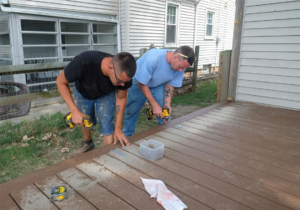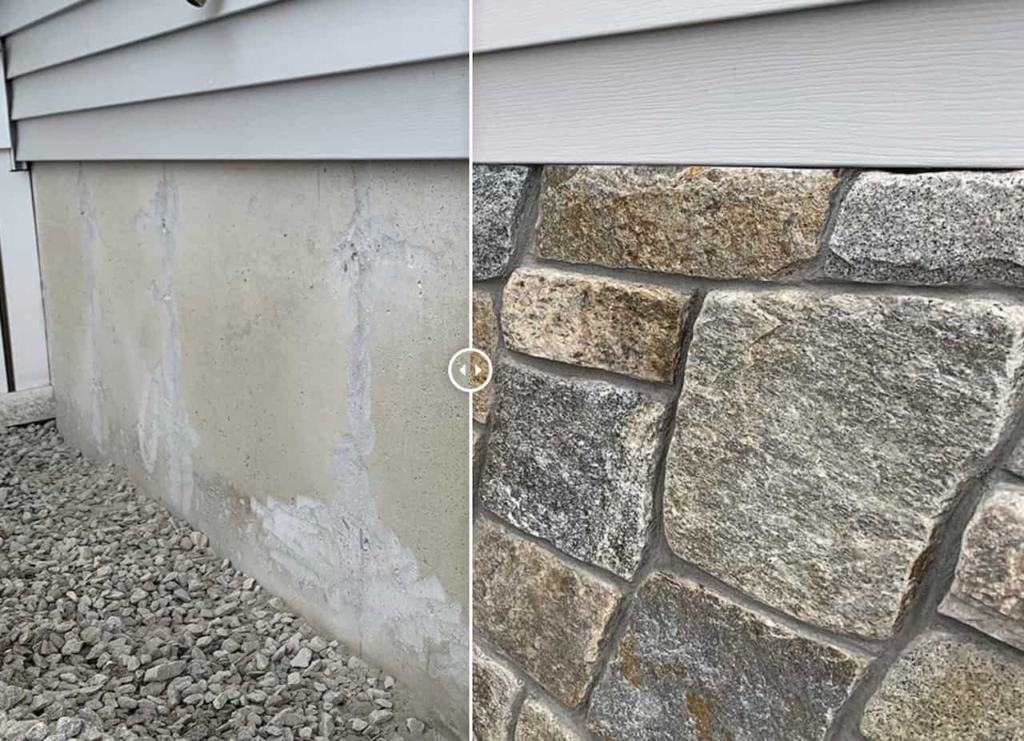Deck Builders are contractors who construct new decks using various materials. They offer design consultations, install add-ons like railings and lighting, and provide cleaning services.
A good contractor should be able to provide proof of license and insurance coverage. It is important to review their portfolio and previous projects carefully. Click the https://jrcsi.com/ to learn more.

To build a deck, a contractor needs to have certain skills. They must be able to frame and install decking and stairs and understand how different materials affect cost and longevity. A professional deck builder with years of experience in all of these areas will be able to help you choose the best materials for your project.
In addition, a contractor should be able to provide a detailed estimate of the cost and a timeline for completion. They should also be able to explain any unforeseen issues that may arise and have a plan in place for dealing with them.
Another important question to ask is whether or not the contractor provides a warranty on their work. A warranty will protect you in case something goes wrong with your deck after it’s built. A good Deck Builder will stand by their work and offer a warranty that covers the material as well as the labor.
Some contractors have dedicated salespersons to handle customer queries and keep clients updated. Others have a design team or a project manager that connects with the client throughout the process. If a builder does not have a designated point of contact or is not transparent about their communication, that’s a red flag.
You should also inquire about what types of materials the contractor offers and why they chose those particular ones for their projects. For example, some builders only use pressure-treated wood, while others specialize in composites. These different materials each have unique benefits, costs and maintenance requirements. A contractor should be able to clearly explain why they recommend one material over another and how each will affect your project’s overall cost, longevity and aesthetics.
It’s also a good idea to find out if the contractor will be pulling a permit for your project. This step is vital to ensure that your deck is up to code and meets local building regulations. If your contractor doesn’t want to pull a permit, it could be a sign that they’re not reputable or experienced. In this case, it’s worth looking elsewhere for a contractor.
Design
Deck design involves more than just the dimensions and location of the deck, but how you’ll use it. A deck for entertaining guests will require a different design than one that’s just for sunbathing. Considerations like how many guests can comfortably sit on the deck at once, how much shade you’ll need, and whether or not you want to include a dining table or fire pit will influence the overall layout of your new deck.
When hiring a deck builder, you’ll want to find someone who has the right experience and qualifications for the job. Look for builders who have plenty of satisfied customers and a portfolio of previous work that demonstrates their skills. In addition, ask potential contractors if they have any additional training or certifications that may help them meet your specific needs.
Building a deck is a complex project that requires special tools and construction methods. For example, an on-grade deck typically requires concrete piers on which beams and joists are fastened. Framing hardware such as post bases and joist hangers are used to join joists together. Decking (what you walk on) is then fastened to the joists with screws or nails from the top and “invisible” fasteners from below.
A deck builder’s knowledge of building codes is also crucial to the success of a project. These guidelines set maximum load and span limits, specify minimum joist size, and provide detailed information about structural requirements for your specific climate. The codes also provide recommendations for deck materials. For example, it is important to choose a rot-resistant material that will not need staining or painting.
Most deck-building games feature a collection of cards that players curate to make their individual draw deck more effective. Various ways to do this vary between games, but most involve the players adding cards from a pool to their hand or discard pile in order to increase the chances of drawing more desirable cards. The process can be fun and engaging, but it’s important that players understand how to optimize their cards in order to win.
Materials
Whether a deck is constructed from wood, composite or another material, it needs to be strong and stable. It is important that your deck be built by a professional to ensure that it meets local building codes and withstands the elements.
You should always ask for samples and pictures of their work before hiring a contractor. Also, request proof of licensing and insurance. This can help you avoid scams and hiring inexperienced contractors. It is also wise to ask potential builders for referrals from previous customers. This can provide you with an idea of their workmanship, communication skills and project management style.
Decks are made from a variety of materials including wood, stone, concrete and composite. Each has different benefits and price points. Wood is renewable and versatile, making it an attractive option for a deck. It is also lightweight, which reduces the stress on your house and foundation. However, it can be splintery if not treated regularly with a preservative.
Most modern decks are constructed with pressure-treated lumber, which is resistant to rot and insect infestation. It is relatively cheap and will last up to 15 years if properly maintained. The downside is that it requires yearly sanding and staining to keep it looking good.
Posts are vertical components that provide support for deck beams and the rest of your deck’s structure. They are typically made from pressure-treated wood or steel, and the size and spacing depends on the size and weight of your deck. Posts are usually installed on footings or a concrete or masonry base, and they should be braced with 2x lumber to prevent flexing.
Beams are horizontal structural components that support deck joists and the rest of your deck’s frame. They are typically made from pressure-treated lumber or steel, and the size and spacing depend on the size and weight of your deck. Beams should be connected to a ledger board, which is attached to your home with lag bolts. The ledger board should be flashed (wrapped with z-shaped vinyl) to prevent water damage. Joist hangers are metal fasteners that can be used to secure joists to the ledger board without notching the ends of the boards.
Installation
Before the contractor begins physical construction, they should consult with you to assess your needs and provide a portfolio of previous decks they have worked on. This will help you get a sense of their style and craftsmanship. They should also be able to tell you what types of materials they prefer to work with and give you ideas for the type of design you want.
Before starting, they will need to secure a building permit for the project. This is usually required for any deck that is over a certain height and square footage, and it may require inspections by local officials. This step is very important because it can save you a lot of trouble down the road. It may also help you if you ever decide to sell your home, as a properly built deck is an attractive selling point.
When it comes time to start the actual construction, a skilled contractor will ensure that the footings are anchored in proper locations. They will also use concrete to ensure the posts stay in place, and they will install a flashing that will protect against water damage and other issues. They will also fasten the joist hangers and lay out batter boards and mason’s strings. Once the location of each footing is established, they will cut and fit the rim joist’s inner 2x stock and fasten it to the hangers using joist hanger nails. Then they will set the footings and post bases.
The installers will then begin installing the planks of the deck. This can be tedious and a little mind-numbing, so it’s important to stand up every few courses to take in the big picture. They should also measure often to confirm they are cutting and fitting the planks correctly. They should also use a sawing guide for accuracy, but even this is not fail-safe. If you lose concentration for a moment, your blade could wander or bind and cause mistakes.
While you can opt for a traditional wood deck, many homeowners are turning to composite products to avoid maintenance. The main advantage of these is that they don’t rot, and they are more resistant to water. However, they may look less authentic than a cedar or redwood deck.
